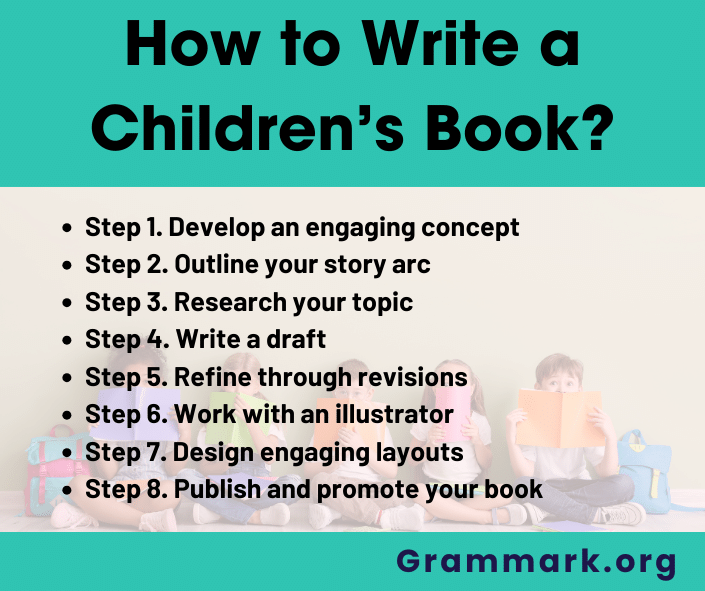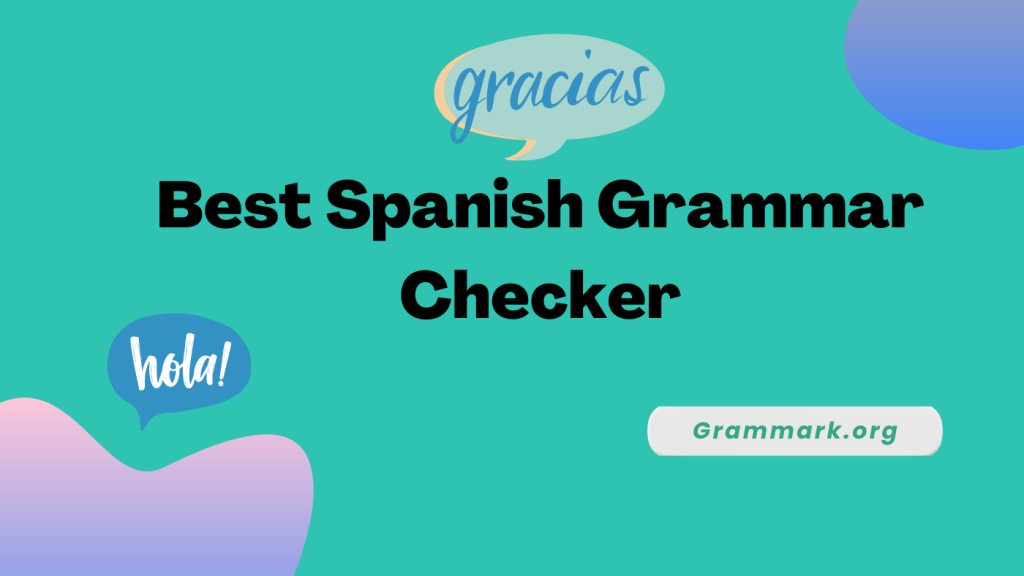Writing a children’s book is an exciting journey that lets you tap into your creativity and make a lasting impact on young minds. Whether you’re a seasoned author or a first-time writer, crafting a story for kids requires a unique blend of imagination, simplicity, and understanding of your audience.
In this guide, I’ll walk you through the essential steps to create a captivating children’s book that will enchant both young readers and their parents.
TL;DR: How to Write a Children’s Book
- Choose an age-appropriate topic and theme
- Create relatable characters
- Develop a simple, engaging plot
- Use clear, concise language
- Include vivid illustrations
- Edit and revise carefully
- Get feedback from children and adults
- Consider self-publishing or traditional publishing options
Why Write a Children’s Book?
There are many great reasons to write a children’s book. Below are a few top motivational thoughts for you to consider:

- Share your passion: If you love reading kids’ books or have always wanted to write one, it can be incredibly fulfilling to create a story you’re excited about.
- Inspire young minds: Children’s books expose kids to new ideas, cultures, and ways of thinking. You can spark their imagination and nurture their creativity.
- Send a positive message: Children’s books can teach lessons, model good behavior, and promote diversity and inclusion. You can help positively shape young minds.
- Leave a legacy: A successful children’s book can stay in print for generations and be passed down through families. It’s a way to make a lasting impact.
- Profit potential: While most children’s books do not become huge commercial successes, there is profit potential in children’s publishing. Passion projects can turn into fruitful side careers.
No matter your specific motivation, writing a children’s book is a meaningful endeavor. The experience of creating a book kids will love is incredibly rewarding.
Types of Children’s Books to Write
There are many categories and formats to choose from when deciding what type of children’s book you want to write. Consider which genres and styles play to your strengths as a writer.

1. Fiction
Fiction stories spark imaginations and can transport readers to fantastical worlds. Popular fiction genres include:
- Picture books – Short, highly illustrated stories aimed at preschoolers. They are around 500 words or less.
- Early readers – Short-chapter books with simple vocabulary for emerging readers around ages 5-7.
- Chapter books – Novels with short chapters and illustrations. They target readers ages 7-10.
- Middle grade – Novel-length fiction for readers ages 8-12 with more complex plots and few to no illustrations.
- Young adult – Sophisticated teen fiction aimed at readers ages 13 and up.
2. Non-fiction
Non-fiction children’s books teach readers about the real world. Common categories include:
- Concept books – Teach simple facts or concepts like numbers, letters, shapes, and colors.
- History – Bring historical events, figures, and places to life for young readers.
- Science – Explore science topics like space, nature, biology, and physics.
- Biographies – Introduce children to influential people and their significance.
- How-to guides – Teach kids practical skills and hobbies step-by-step.
3. Hybrid Books
Some children’s books combine fiction and non-fiction elements, such as:
- Historical fiction – Fictional stories set in real historical periods and events.
- Poetry – Rhyming poems engage kids through wordplay.
- Alphabet books – Use letters of the alphabet to structure short verses or concepts.
- Math stories – Fictional narratives incorporate math concepts like counting and shapes.
No single category is “best.” Choose the genre that suits your interests and ideas.
Things to Consider Before Writing A Children’s Book
Writing a children’s book takes creativity, skill, and an understanding of the children’s publishing landscape. Before diving in, consider these key points:
1. Your Audience and Goals
- What age range are you writing for? Books target distinct age segments from babies through teens.
- Are you primarily trying to entertain, educate, inspire, or teach a lesson? Define your purpose.
- Study popular children’s books in the genre and age range you have in mind. Know the market.
2. Story Development
- Most children’s books start with a strong main character kids can relate to. Develop an empathetic protagonist.
- Brainstorm unique story ideas and play with your concept before committing it to writing. Is it engaging?
- Your plot should build to a satisfying climax and resolution. Outline the arc before writing.
3. Illustrations
- Picture books require illustrations on every page. If you can’t illustrate, you’ll need to partner with an artist.
- Even chapter books need simple illustrations every few pages. Display your story visually.
- Obtain rights if you want to use existing art in your book. Original illustrations are preferable.
4. Publication Pathways
- Traditional publishing houses are selective but handle editing, design, and distribution. Should you query agents?
- Self-publishing gives you creative control but requires you to finance, market, and distribute the book yourself.
- Know the pros and cons of different publishing routes before starting your manuscript.
With the right preparation, you’ll be ready to bring your children’s book vision to life!
How to Write a Children’s Book?
Once you’re inspired to write a children’s book, follow these steps to turn your ideas into a polished story:

Step 1. Develop an engaging concept
Brainstorm story ideas that will capture children’s attention. Focus on coming up with a compelling main character that kids can relate to.
For fiction, create a protagonist with personality traits and struggles that children will connect with. Develop an interesting situation for your character to get into.
For nonfiction, choose a topic that will fascinate your readers, like space travel, animals, or influential people in history. Research popular children’s books in your target age range to help generate ideas and understand what hooks young readers. Refine your concept until you have a fun, meaningful, and engaging premise.
Step 2. Outline your story arc
Map out the trajectory of your story from beginning to end. Start by writing a summary of your overall plot. Then, make an outline that breaks your story down into key scenes. Plot out the major events that will occur from the opening scene to the climax and the resolution. Define character motivations and arcs.
Plan how subplots or secondary storylines will fit together with the main narrative arc. Determine pacing and transitions between scenes. Outlining the structure ahead of time will make the writing process flow smoothly.
Step 3. Research your topic
Conduct any factual research needed to enrich your story details. For nonfiction children’s books, thoroughly research your topic through books, academic sources, interviews with experts, field observations, and more. Take extensive notes.
For fiction, research can uncover interesting story angles. Learn about the time, location, or career your character inhabits so your scenes feel authentic. A researched children’s book earns authority and engages young readers.
Step 4. Write a draft
With your outline as a guide, it’s time to start bringing your story to life! Expand each outline point into a full scene with descriptive detail, character development, and compelling action. Write freely without obsessive editing in this first draft. Follow your outline fairly closely, but allow room to explore ideas that emerge in the moment.
Let your unique voice and style shine. Write from a child’s perspective in a clear, vivid language they will grasp. Be playful and imaginative. Include entertaining elements like humor, suspense, and engaging dialogue. Bring your vision to the page.
Step 5. Refine through revisions
Now, revise your draft with fresh eyes. Tighten up scenes and strengthen character arcs. Fill in any plot holes or loose ends. Clarify confusing passages. Try reading your manuscript louder to find out if there is an awkward phrasing. Check that the content aligns with your target age level. Polish your language and word choice.
Ensure your story flows smoothly from scene to scene. Request feedback from critique partners and young readers in your ideal audience. Keep revising until you have a tight, polished manuscript ready for publication.
Step 6. Work with an illustrator
Children’s books need eye-catching visuals. If you don’t illustrate yourself, seek out an illustrator who understands your vision. Provide detailed art direction to align the illustrations with your story.
Negotiate contracts for work-for-hire or rights-managed illustrations. Build creative synergy between text and art. Allow the illustrator the freedom to contribute their visual ideas. Integrate their artwork seamlessly with your words through an iterative process. Great illustrations elevate the book.
Step 7. Design engaging layouts
Work closely with a professional book designer to artfully arrange text, illustrations, titles, and supplementary elements like author bios and dedications into cohesive page layouts. Strive for balanced designs that aren’t too cluttered. Allow ample white space around the art.
Vary layouts across page spreads to maintain interest. Carefully place illustrations alongside related passages. Choose easy-to-read, appealing fonts and spacing for the target age group. Keep refining until you have an inviting design.
Step 8. Publish and promote your book
The next step is by promoting your written book to the world through publishing. For self-publishing, you’ll need to coordinate production through printing platforms like Amazon KDP or IngramSpark. To traditionally publish, work with a literary agent and publisher to handle production, distribution, and marketing.
Spend more time proofreading, better editing, creating better cover design, and formatting the whole book. Promote your book through social media campaigns, speaking engagements at schools and libraries, pitches to reviewers, and networking with booksellers. Consistent marketing and public relations efforts will spread the word so your story can positively impact young readers!
Following these steps will help you take your children’s book from concept to completed work. Stay organized and break the process down into manageable stages. Your creativity, patience, and hard work will pay off with a polished book that kids and parents will love.
Best Tips to Write a Children’s Book
Writing an excellent children’s book takes skill and practice. Keep these top tips in mind:

- Keep sentences short and vocabulary simple. Long sentences and complex words frustrate young readers.
- Rhyme and repetition appeal to kids. Use rhyming, alliteration, and repeating patterns in both prose and poetry books.
- Use vivid descriptions. Capture children’s imaginations with engaging sensory details about how things look, sound, smell, feel, and taste.
- Create well-paced plots. Don’t linger on slow scenes. Pack each page with action and intrigue.
- Feature relatable characters. Protagonists should be optimistic and exhibit traits children identify with, like bravery, curiosity, and a sense of adventure.
- Incorporate humor. Silly situations and funny wordplay get kids giggling.
- Focus on emotions. Children connect with protagonists who experience authentic emotions, struggles, and triumphs.
- Moral lessons should be subtle. Lightly convey positive themes without preaching to young readers.
- Know your audience. Always write with your target reader’s age, interests, and abilities in mind.
Conclusion: Write Children’s book with our detailed guide
Writing a children’s book is a rewarding experience that allows you to shape young minds and spark their imagination.
By following the steps outlined in this guide, you’ll be well on your way to creating a story that resonates with children and stands out in the competitive world of children’s literature.
Remember, the key to success lies in understanding your audience, crafting a compelling narrative, and bringing your story to life with engaging illustrations. So, grab your pen or keyboard, let your creativity flow, and start writing the next beloved children’s book!
Related Reads:
FAQs
Choose an age range that fits your story concept. Write simple books with illustrations for preschoolers to early elementary school kids. Older children have longer attention spans for chapter books with minimal pictures. Know the interests and maturity of your target reader.
Picture books are typically 32 pages or less. Early readers are 1,000-5,000 words. Chapter books range from 5,000-10,000 words, or longer for middle-grade and young adult novels. Books don’t need to hit maximum length. Focus on writing a tight story.
It’s best not to rhyme an entire story, which is difficult to sustain. Use strategic rhyme and rhythm in picture books. Short rhyming poems or key scenes with rhyme work well for chapter books. But paragraphs of rhyming text become tedious.
Research literary agents who specialize in children’s books. Query them by email with a summary of your story and the first chapters. Never pay an agent upfront. If an agent offers you representation, they will submit your work to publishers.
Self-publishing gives you creative control and faster access to readers but requires you to finance, market, and distribute the book yourself. Weigh the tradeoffs based on your goals and budget. Hybrid approaches like partnering with a boutique publishing company are also an option.


